Looming over the beach in Rockaway, Queens adjacent to Jacob Riis Park is the abandoned Neponsit Beach Hospital also known as the Neponsit Children’s Hospital. The hospital once served as a tuberculosis sanatorium and operated from 1915 to 1955, and the main building was designed by the notable architectural firm McKim, Mead and White. Neponsit Beach Hospital mostly operated on children, but by World War II, the hospital began to treat military veterans until the hospital’s closure. The hospital was later converted into a Home for the Aged, a city-run nursing home that closed in 1998.
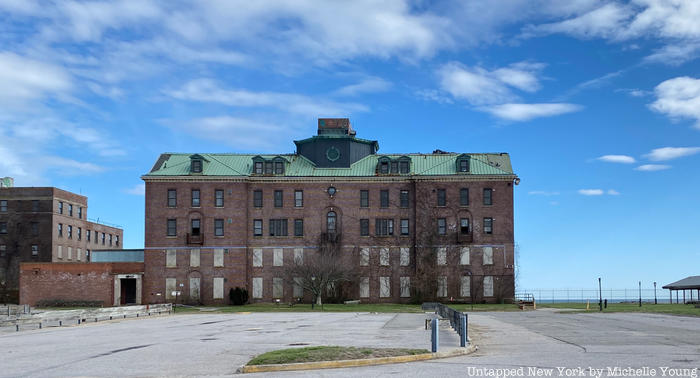
Around the start of the 1900s, the journalist Jacob Riis advocated for the creation of a children’s tuberculosis hospital in the Rockaways to take pressure off of the more prominent tuberculosis treatment centers in the city. Riis, a leader of the muckraking movement, chronicled the horrifying condition of New York’s tenements in his book How the Other Half Lives. After publishing his findings, Riis worked with the Association for Improving the Condition of the Poor and New York City Mayor George B. McClellan, Jr. to create a hospital on the beach away from the hustle and bustle of the city.
“Riis soon became an influential spokesperson to lobby for the establishment of many of the city’s parks and playgrounds, providing a haven from the stagnant air and cramped lifestyle so commonly found within the city limits,” writes Opacity. The park and hospital began development starting in 1907, but efforts were suspended until 1909 due to the disastrous Panic of 1907, when the New York Stock Exchange fell nearly 50% from the previous year’s peak. Before being transferred to the city, the hospital was built by the Association for Improving the Condition of the Poor with support by the Neponsit Realty Company and private sources.
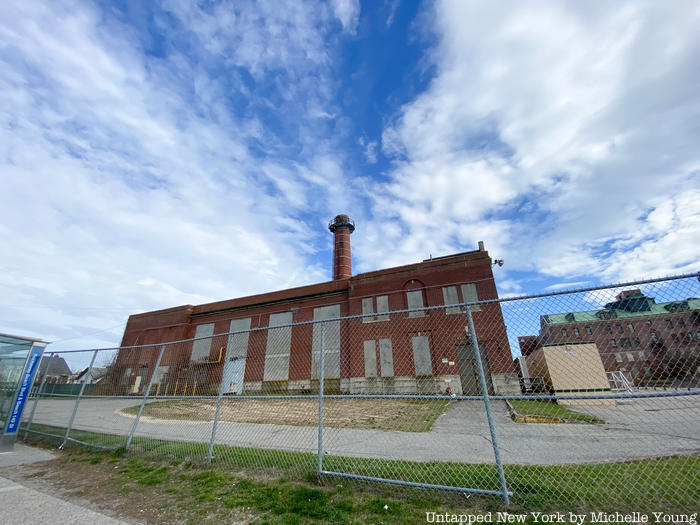 Power plant at the abandoned Neponsit Beach Hospital
Power plant at the abandoned Neponsit Beach Hospital
In order to raise the $250,000 needed for the hospital’s construction, the Association distributed pictures of “Smiling Joe,” a boy suffering from spinal tuberculosis at the nearby Sea Breeze Hospital in Coney Island. The boy appeared in Association letters, newspapers, and magazines, and Theodore Roosevelt and John D. Rockefeller paid visits to “Smiling Joe.” After seeing the boy, Rockefeller contributed $125,000 to the project.
“Joe, although he suffered with spinal trouble and had to lie strapped to an iron frame, had a most cheerful smile. The doctor took his picture and sent it broadcast throughout the country, with an account of the work. Money came in with every mail, from East and West, North and South,” wrote the New York Times.
The newly opened hospital replaced Sea Breeze Hospital, as almost fifty children were transferred to Neponsit Hospital followed by children from other city hospitals, tenements, and orphanages. The main building was designed by McKim, Mead & White in a “U” shape with a capacity of 122 patients. Facing the beach were porches and open-aired balconies facing the beach so that patients could momentarily escape their painful reality.
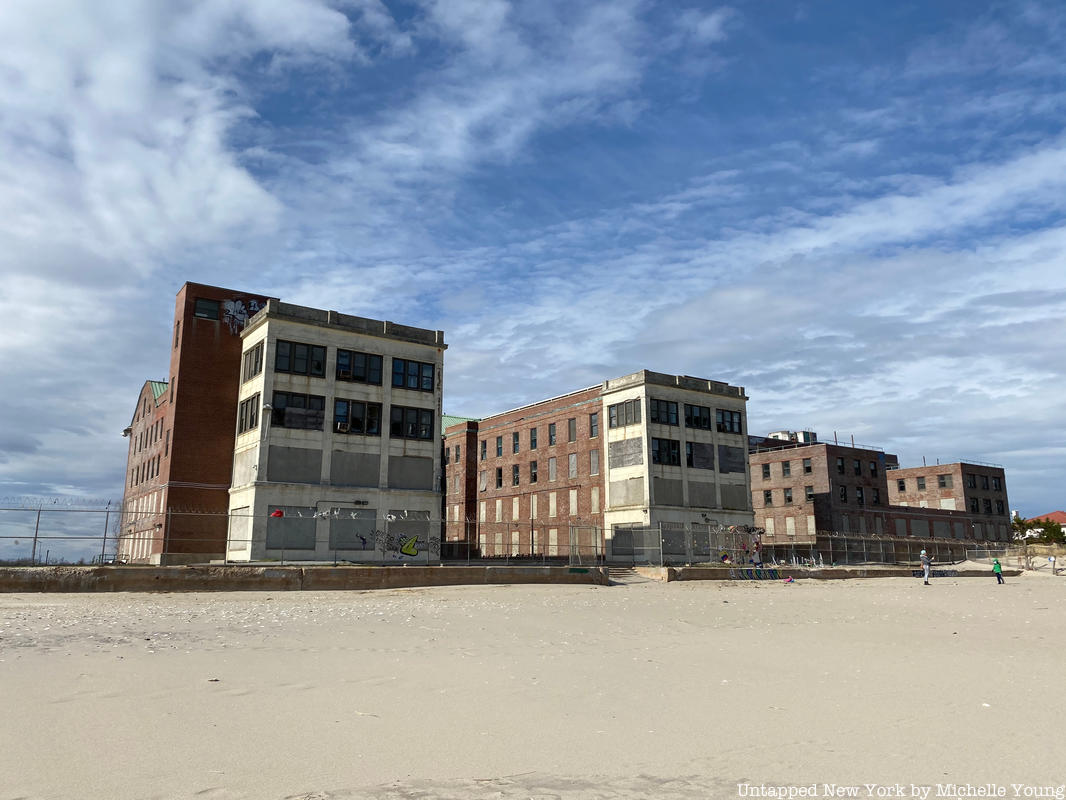
“They become sun worshipers these little ones, who have come a long way from dreary, harassed homes that could not provide them with the proper nutrition and care; from the deadening institutionalized atmosphere of orphan asylums, from charity wards and from crowded fire escape ‘sun parlors’ perched over harrow, foul streets. In their two-wheel carts and chairs, or on crutches, or just dragging one foot after the other, slowly but without fuss, they come to the big open piazzas fronting on the beach or down to the sand for sun baths,” describes a 1930 article from the Brooklyn Eagle.
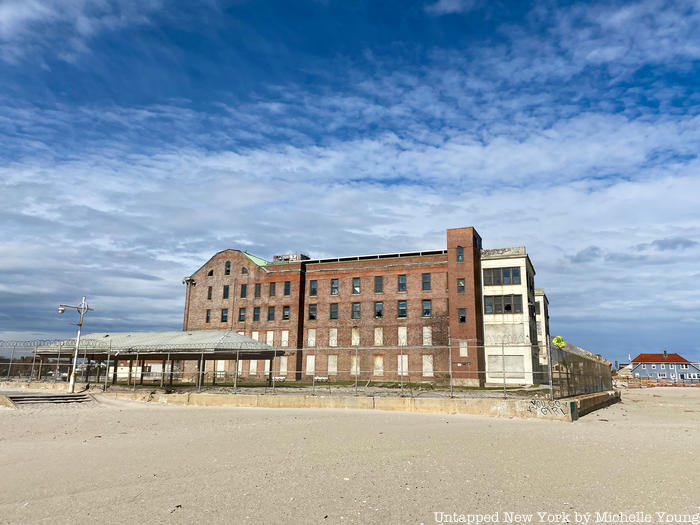
For the next two decades, the hospital treated hundreds of young tuberculosis patients, giving them opportunities to bathe in the ocean and travel outside with supervision. In 1929, city hospitals commissioner Dr. William Schroeder, Jr. announced an expansion for the hospital that would double the hospital’s capacity. The hospital soon became a project of the New Deal agency WPA, or Works Progress Administration, which employed millions of job-seekers to carry out public works projects. The Board of Estimate appropriated $300,000 for the building’s expansion, and a power plant and a nurses’ residences were soon after completed in 1939 and 1941 respectively. Two sets of murals for the hospital were commissioned by the WPA in 1938, included a set of 11 circus-inspired murals by Louis Schanker and 23 panels depicting children playing games by Helen West Heller. The WPA also created gardens around the hospital and added a sea wall.
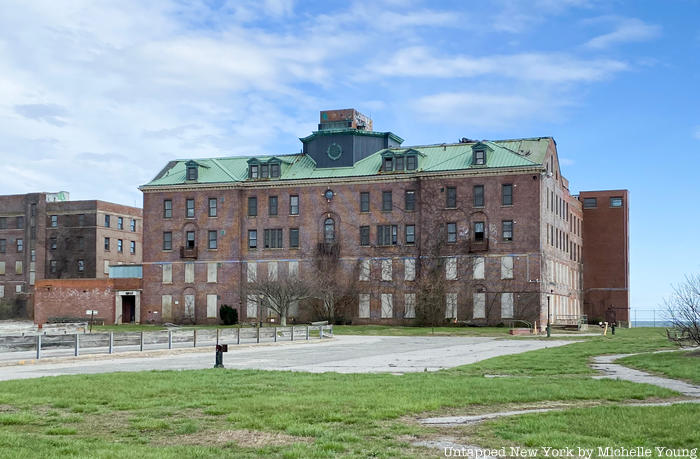
According to a 1943 New York Times article, 104 patients were evacuated in accordance with an order by Mayor LaGuardia to close childcare institutions in order to conserve oil during World War II. LaGuardia noted that if Neponsit Hospital closed, 300,000 gallons of oil would be saved, which would lead to a 10% reduction of New York City’s fuel oil. Two years later in 1945, the hospital reopened, but mainly to veterans. The US Public Health Service leased the hospital to treat veterans with tuberculosis for five years.
In 1952, the Queens Hospital Center was created through the merging of Queens General Hospital and Triboro Hospitals, and Neponsit Beach Hospital was absorbed into this new medical center. Yet despite talks of expanding Neponsit into a general hospital, Neponsit closed in 1955, as tuberculosis cases declined significantly in the 1950s.
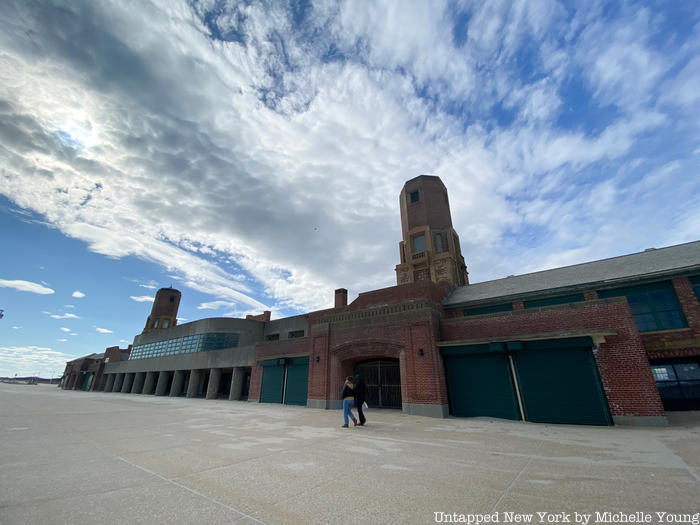 Art Deco bath house in Jacob Riis Park
Art Deco bath house in Jacob Riis Park
For the next few years, many New York agencies struggled to discover the best use for the building. New York City Parks Commissioner Robert Moses proposed expanding Jacob Riis Park onto the hospital land, replacing hospital buildings with sports fields and a swimming pool. The New York City Planning Commission actually approved this expansion unanimously, but the Board of Estimate overturned the plan. In the meantime, others proposed converting the hospital into housing, while others proposed turning the building into a nursing home. By 1959, construction began on the main building and the nurses’ residence, and in 1961 the Neponsit Home for the Aged was opened.
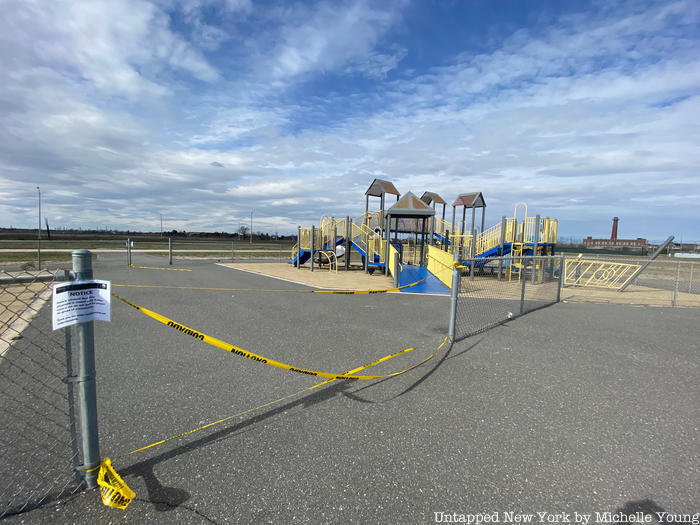 Playground closed for coronavirus, with sports field and abandoned hospital in background
Playground closed for coronavirus, with sports field and abandoned hospital in background
For the next three decades, the nursing home cared for elderly patients, mostly with Alzheimer’s. Efforts to move HIV/AIDS patients to wings of the Neponsit Home for the Aged in the 1980s failed due to high risk of disease transmission.
Yet in 1998, the renamed Neponsit Health Care Center abruptly emptied the center of 282 elderly patients in the middle of the night. As a result of a Labor Day storm, the building suffered major damage to the point that city officials thought the building would collapse. As a result of this sudden move, two patients died. A report by the federal government concluded that the evacuation was unnecessary and that health officials not only endangered patients’ lives but also lied to them about a speedy return to Neponsit.
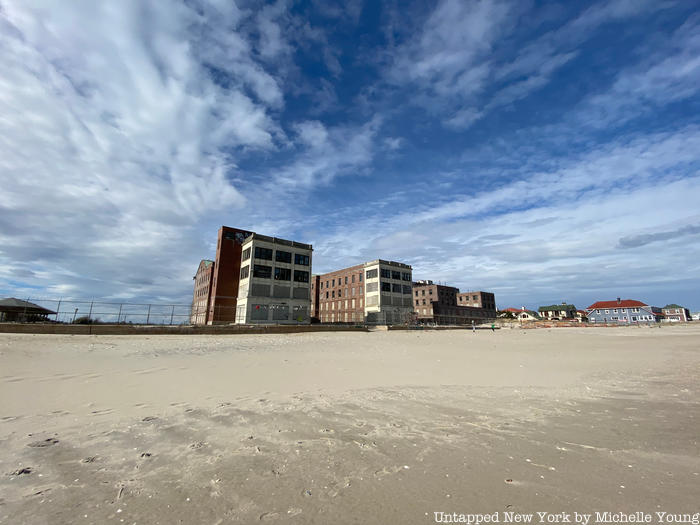
Due to deed restrictions that allow only a hospital or public park, little redevelopment of the site has occurred. The Neponsit Adult Day Health Care relocated to nearby Rockaway Park in 2004, but the facility still remains abandoned despite numerous efforts to develop luxury homes on the property to the dismay of local residents. A security guard booth remains in operation, even in coronavirus times along the entrance on Rockaway Beach Boulevard.
Next, check out 12 groundbreaking hospitals that have closed in NYC.





